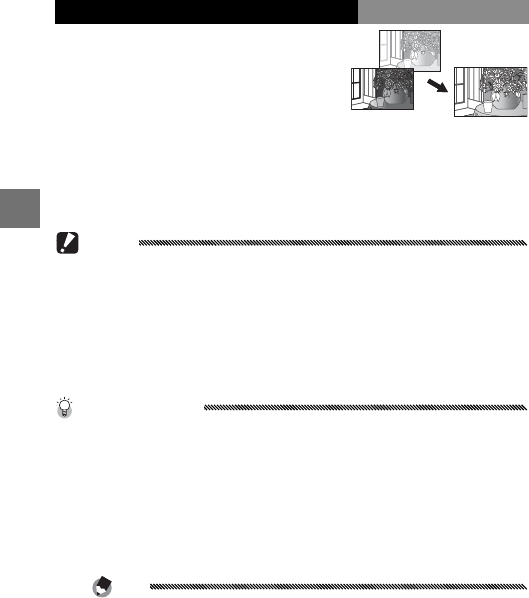
48
MORE ON PHOTOGRAPHY
4 Mode: Dynamic Range Double Shot
Each time the shutter-release but-
ton is pressed, the camera takes
two shots at different exposures,
then combines the areas that are
correctly exposed to create a single composite image
with natural contrast, reducing loss of detail in highlights
and shadows. Use to photograph scenes that contain
both sunlight and shade or other high-contrast subjects.
Cautions
• The flash turns off, digital zoom can not be used, and RAW op-
tions can not be selected for Picture Quality/Size (page 57).
• The desired effect may not be achieved if the scene is too bright
or too dark.
• Moving subjects may be blurred.
• Flicker from fluorescent lights may affect colors and brightness.
Tip: Dynamic Range
“Dynamic range” refers to the range of tones that can be expressed
by the camera, which is narrower than that visible to the naked eye.
In high-contrast scenes, this may result in loss of detail in high-
lights and shadows. Dynamic range double shot creates a smooth
transition from highlights to shadows for natural contrast.
1
Mount the camera on a tripod.
Note
Dynamic range double shot requires more time to create an
exposure than other modes, and an
J icon is displayed to
show that photos may be blurred. Use a tripod. Note that
the camera may move when the shutter-release button is
pressed, even if mounted on a tripod. This can be prevented
by using the self-timer (page 26) or an optional CA-1 cable
switch wired remote shutter release.


















